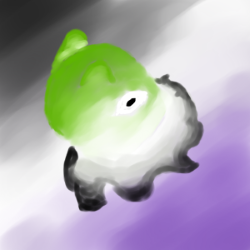The first time I read the term “Solarpunk”, I got really excited. First before I was struggling to find a genre for Viral Airwaves, and this seemed like it might fit (it kind of does). Second because I am a big sucker for steampunk, and for new solar technologies.
But what is solarpunk? It is a genre that reenvisions the future as driven by renewable sources of energy, in eco-friendly and self-sustaining communities. Steampunk had cogs, steam and blue electricity. Solarpunk has trees, solar energy, bioluminescent algae. Its aesthetics aren’t Victorian Era; they tend towards Art Nouveau. And here are three characteristics of the genre that really make me happy:
1) Eco-friendly
Solarpunk’s very core is that it looks at a future where we in fact survived the disappearance of oil, where we managed to scale back our imprint on the planet and learn to live on Earth without screwing it up. It draws its inspiration from green technologies like solar windows and roadways, and from curvy architectural innovation, such as the bamboo house or the botanical apartments in Phucket, Thailand.
2) Nature-inspired
I love how so much of the inspiration behind solarpunk is drawn from natural shapes, or innovations already existing in nature. From the use of slimography and biomimicry as ways of conceptualising efficient techs, to the use of nature in the designs of accessories and clothes [click all those links, seriously], nature informs a lot of the genre’s technologies and style. As a big big fan of bioengineering, who loves to see bacteria and fungi used in tech, this makes me really giddy.
3) Community
A lot of the solarpunk imaginary worlds out there rely on close-knit, self-sustained community, where every individual contributes to the whole. This is reflected in things like having solar panels on every roof, and thus powering the whole community from the individual houses instead of having one big solar panel field. It also means community gardens, large public spaces, close confines.
It can (and to me will) mean a world that moved past capitalism, at least on the community level. And to me that’s where the “punk” comes in. To build viable where so much is shared–and which won’t kill the planet–you have to do away with the idea of constant growth and profit.
4) Diversity
When you look at solarpunk fanart or read through text posts about it, you realise that a lot of the inspiration comes from non-european country. Which makes sense, because the western world isn’t leading solar techs at all. So, racial diversity is already very common, and a lot of the time it doesn’t stop there. It ties with the close-knit community that no one is left behind, that no one is excluded. In my mind solarpunk means that those beautiful curved patterns in building designs lead to ramps for wheelchair users, for example.
The amount of positivity and optimism in this genre is amazing. It’s a refreshing change from the post-apocalyptic and dystopic universes out there (which are great genres, mind you, I love them too). I think it’s an incredible space to build adventures to bring positive representations to diverse characters. Yes, solarpunk creates ideal worlds in many ways, but it’s also a look into what could be. And heck, what should be.
This genre appeals to so many different sides of me — the idealist activist, the scientist, the diversity writer — I’m amazed I just now really discovered it. This is the kind of science fiction I want to write. In a way I half-started already, because looking back on Viral Airwaves, you can see how it ties into important elements of solarpunk.

